Foraging rose hips is easy and a joy to do. Once you learn how to identify, harvest, and use them, you will be amazed at the medicinal and nutritional benefits rose hips have to offer.
This post may contain affiliate links at no additional cost to you. By making your purchases through the links on this website, IMSL may make a small percentage at no direct cost to you. IMSL only promotes products we use & truly believe in. Please refer to my Privacy & Disclosures for further information. IMSL thanks you for your support!
Foraging rose hips every fall always brings a sense of joy & wonder. How can such a tiny fruit pack such an amazing nutritional & medicinal punch?
Once you learn to identify & harvest rose hips, with a little planning you can take advantage of the many benefits rose hips have to offer.
ROSE HIPS DEFINED
What exactly are rose hips? Simply put they are the end result of the rose flower itself. They are the edible fruit or seed pod of those rose blooms that have been left to mature on the stem.
No matter if you simply enjoy the flower for it’s amazing beauty, harvest the petals for use, or wait and allow the rose hip to mature, you have choices when it comes to the rose variety.
After all, roses, are members of the Rosa spp family of plants with over 300 different types of both wild and cultivated rose species to choose from. And they all boast the same benefits and uses!
NOTE: I highly recommend only harvesting rose hips which have not been treated in any way with chemicals. (Thus my spotty leaves which can be seen in some images). Especially when harvesting from cultivated rose plants as I have done.
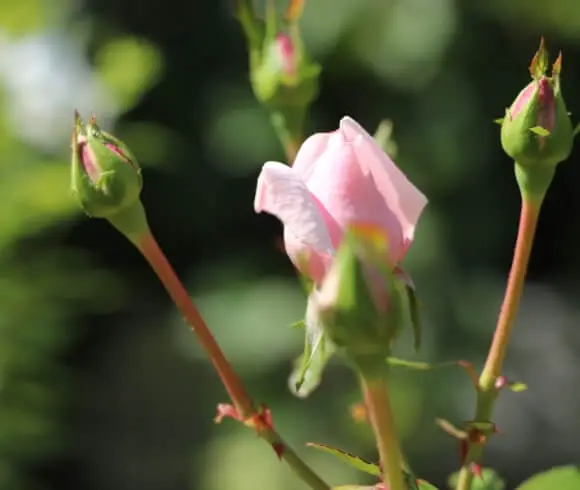
Rose hips ripen in the late summer or fall depending on your location. Both cultured roses and wild rose are found throughout the world, the wild growing in fields, roadsides and trails, and along the shore’s of coastal area’s.
Rose hips only appear once the bloom of the rose has dropped from the plant.
IDENTIFYING THE “HIP” OF THE ROSE
Typically they are red or orange but some varieties can either be black or purple in color. Once mature, rose hips will be berry-sized fruit which grows at the end of the stem where the spent flower used to reside.
Rose hips range from round in shape to oblong, come in varying sizes from large to small, with strands of “hair” extending from the bottom of the hip (away from where the hip is attached to the stem).
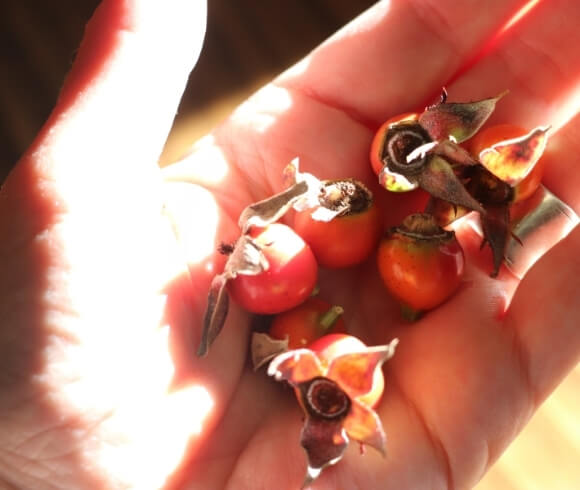
I know, I know, especially when you grow cultivated roses for their beauty in cut flower bouquets, leaving the spent flowers on the plant can certainly seem sacrosanct for many!
However, toward the end of the growing season, by leaving the spent flowers on the rose bush, the swollen green section just underneath the flower will continue to grow once the flower is spent into a gorgeous colored “hip” that is delicious to eat, use in tea’s and other drinks, or use in medicinal & cosmetic preparations.
Inside the rose hip are many very small seeds that are surrounded by many small hairs. Those hairs can be irritating, thus most recipes will call for straining through a coffee filter or cheesecloth to remove as many of them as possible, although there are exceptions to that rule. More on that below.
IDENTIFYING WILD ROSE
Obviously, cultivated rose are easily identifiable. It’s the wild rose that may need a bit of aid in identifying.
Wild rose leaves normally will grow in leaflet sets typically on a single stem. These leaflets are considered alternate, pinnately compound (feather-formed) with between 3-9 leaflets and are normally oval in shape and are sharply toothed. The surface of the leaf is either ridged or flat.
The wide open flowers of the wild rose appear in spring and blossom throughout the summer months. These blooms, commonly either pink or white, consist of five petals which surround its center, are approximately 2 inches in diameter and offer an intense, sweet rose fragrance.
Wild rose growth habit ranges from the multiflora rosa (Rosa multiflora) and the dog rose (Rosa canina) which are both climbing vines to other varieties such as the rugosa rose (Rose rugosa) which grow in a shrub-like formation.
ROSE HIP IMPOSTERS
Foraging for rose hips are the perfect introduction for those just beginning their journey into gathering & foraging.
Although there are a few flowers which have a similar look to that of the wild rose, fortunately for us, they are not harmful.
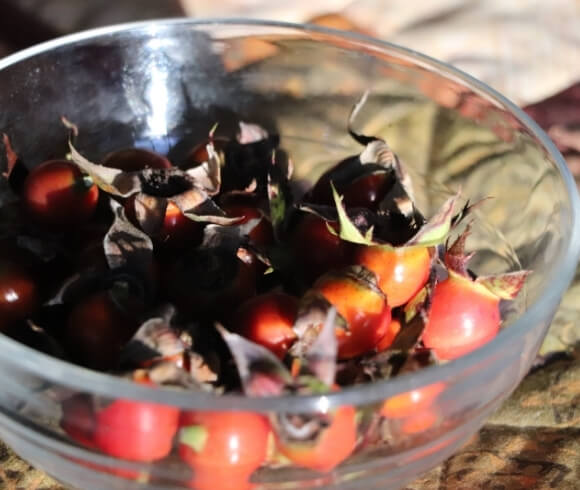
Some may mistake hawthorn berries when coming across them in the wild, but, again, these are not toxic and in fact are edible and boast their own medicinal properties.
ROSE HIP BENEFITS
Rose hips have been used throughout the centuries for their nutritional and medicinal properties.
High in vitamins B, C (a rich source with about 1700 to 2000 mg per 100g dried) making them a wonderful immune support during seasonal cold and flu months, and E, rose hips have been a go to for these vital vitamin nutrients.
Rose hips are also full of flavonoids & antioxidant properties. So much so that in a study with 5 other fruits, rose hips was found to possess the highest antioxidant activity of all.
Although the amounts found within can vary depending on where the plant was harvested (the higher the altitude the higher the antioxidant level), whether the hips are dried or not (dried may have fewer antioxidants than that of fresh ones), or the time of harvest and plant species, you can be sure rose hips are a powerhouse of both nutrient & medicinal properties.
Often used as a remedy and preventative, rose hips have been known to aid in …
- Rheumatoid Arthritis
- Knee & Hip Osteoarthritis
- Aid The Immune System With Cellular Issues
- Balance Fat Metabolism
- Protect Tissues From Free Radical Damage
- Scurvy
- Aids With Adrenal Function
- Prevent Urinary Bladder Infections
- Constipation
- Skin Nourishing
- Menstruation Issues
SHARING IS CARING & I THANK YOU FOR IT ❤️
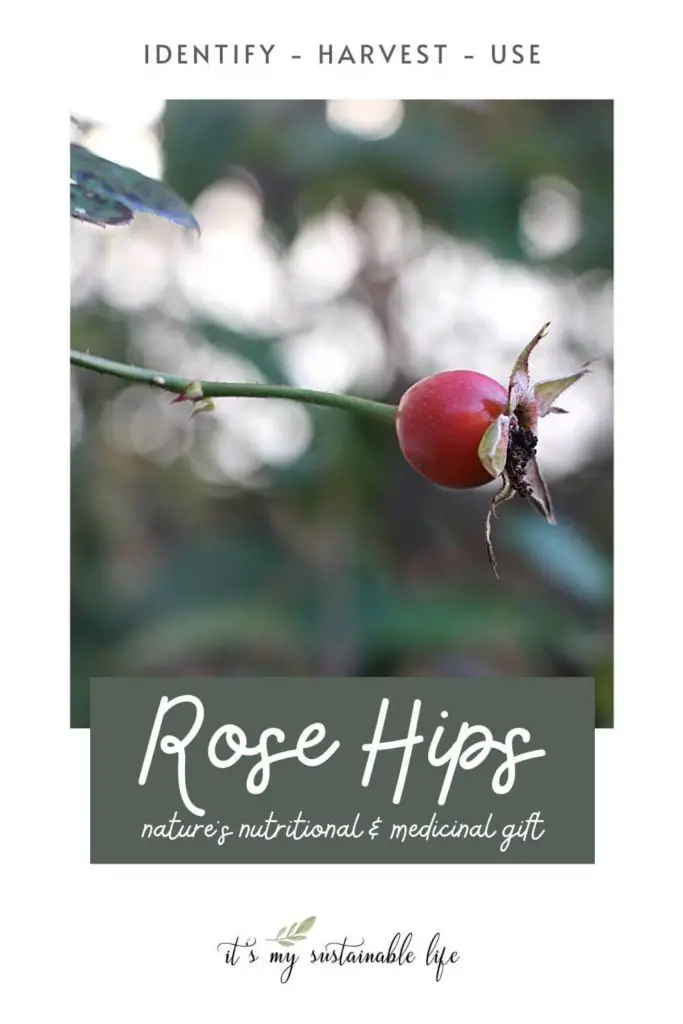
EDIBLE USES FOR ROSE HIPS
Although both the petals and the rose hips from the rose plant are edible, it’s the hips we are focusing on here.
Being from the same family of plants as apples and crab apple, you can imagine the flavor is very similar as well. Ranging from the lighter & tanginess flavor of the Japanese rose to a deeper almost chocolatey flavor of the burnet rose. You get the idea, each variety will have its own unique flavor.
Overall, however, rose hips have a bit of tartness, largely dependent on which variety of plant you harvest from, with the native shrub rugosa rose or the Rosa canina being the sweetest hips of all.
So what can you make and enjoy with rose hips no matter what variety you have available to you? A few suggestions are …
- Rose Hip Syrup*
- Liqueur Or Infused Spirits*
- Cocktails
- Kombucha Flavoring
- Jelly
- Jam
- Sauces*
- Fruit Leather*
- Tea
- Salads & Dressings
- Soup*
- Desserts
- Shrubs – recipe coming soon!
- Infusions – infuse into oil, vinegar, honey, & alcohol
*NOTE: The above suggestions utilize the pulp of the rose hip, meaning the seeds & hairs will need to be cleaned from the hip. This pulp is typically placed into a pan and barely covered with water, cooked over low-medium heat until the water is absorbed and the hip is softened. This pulp is then run through a food mill resulting in the final product which can be used.
**NOTE: The un-marked suggestions can utilize the whole hip, no removing the seeds or hairs. They can be juiced in a saucepan (breaking them up a bit before by whipping them up in a blender with a bit of water) and cook the fruit (additional water may be needed), strain and use as needed. Optionally, you could use a steam juicer should you so fortunate as to have one 😊
Consider adding rose hip juice when making elderberry syrup or even to fire cider to give an added boost of immune support!
I’m sure there are many more edible uses for rose hips. Have some not mentioned here? Let me know in the comments below!
PURCHASING ROSE HIP OPTIONS
Don’t have access to forage rose hips? Or just don’t have the time to gather your own? Fortunately, rose hips can be purchased anytime of the year.
Mountain Rose Herbs, a favorite source of mine, offers rose hips for purchase throughout the year! And through purchasing with the link provided you will be supporting this site 😊
HOW TO HARVEST ROSE HIPS
Here in the NE we can start to harvest rose hips beginning in the fall months & continue all the way through early winter. They are stubborn little buggers in that they will remain on the plant until manually taken off. And it seems the longer the hips remain on the plant, the sweeter they get!
When harvesting during the colder months of early winter, don’t be too concerned if the hips look a bit dried or wrinkled. Although they remain edible once they reach this state, they are best used for dehydrating.
You’ll know when the rose hips are ready to be harvested when they develop in color, turning from green to red, orange, or the other colors mentioned prior.
They will easily be removed from the stem, no excessive pulling required. The hip should be soft to the touch but not excessively so.
Remember, rose hips do well and further sweeten once exposed to a frost prior to harvesting. Should you not reside where there is a frost, typically foraging rose hips from September through December is a safe bet.
Harvesting rose hips can be a thorny, prickly business 😂. Forewarned is forearmed. Protect yourself as best you can with appropriate gloves and long sleeved shirts, long pants, and appropriate footwear (hint, flip flops are not appropriate footwear 😂) for a bit of self-preservation.
With any foraging, it’s always best to consider the wildlife. They feed from rose hips as well. I make a practice of harvesting only a few cups from each plant, leaving a good supply left for the critters to feast on all winter.
HOW TO PROCESS AND PRESERVE ROSE HIPS
Rose hip seeds and centers contain small “hairs” which can be irritating for some. Depending on what you will be using your hips in, you may wish to remove the offending bits from the hip.
Below are several methods of preparing your rose hips for use.
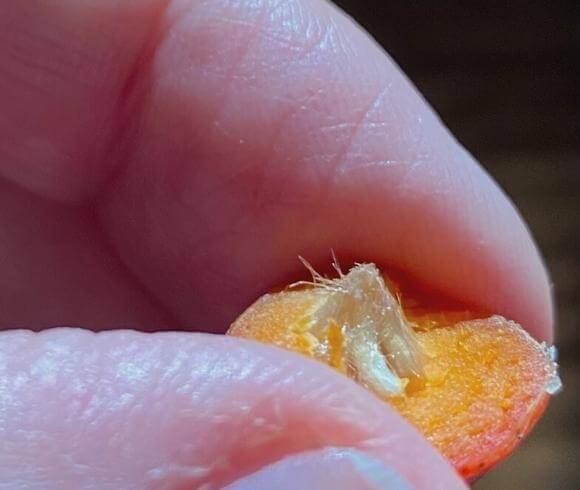
REMOVING SEEDS & HAIRS FROM THE ROSE HIP
To remove the unwanted seed centers, simply slice the washed hip in half and scoop out the seeds almost as you would a squash or pumpkin.
This can be a bit time consuming and tedious, but the end result will be rose hips which are ready to use in preparations such as tea, sauce, jam, and jellies.
BLENDING THE ROSE HIP
This method of preparation is a bit quicker to say the least 😊. Simply place your cleaned rose hips (I like to remove any outer debris from the hip as well) into a blender.
Whip the batch up, mashing the rose hips. Lay the rose hip pulp on a piece of wax paper to dry. Once dried, run the pulp through a sieve to remove the seeds and hairs. You may need to complete the sifting process several times in order to remove all.
Store the dried rose hip pulp in a glass container, covered, in a dark, cool cupboard for use in powders, smoothies, tea, and soups.
NOTE: Rose hip seeds are beneficial for the skin and hair. When using your hips for making oils and personal care products, mash the hips seeds and all.
COOKING ROSE HIPS
My preferred method for processing & preparing rose hips for use is the cooking method.
To cook your rose hips wash your hips and remove bottom and tops from the hip. Place into a saucepan and barely cover with water.
Cook the hips until they become soft and are easily mashed. Run the mashed rose hip pulp through a fine mesh sieve lined with a coffee filter to separate the pulp and juice from the seeds and irritating hairs. Again, this process may take several times to remove all you wish to.
The resulting juice can be used for making jams, jelly, and sauces. It can also be added to smoothies, tea, and soups.
Store your juice in the refrigerator for short term storage (typically between 1-2 months) or for longer storage freeze.
DRYING ROSE HIPS
To dry your rose hips you have several options. Both options below are applicable no matter if you choose to remove the seeds and hairs or not.
SOLAR DRYING ROSE HIPS
Should you reside in an area that receives warm weather during the harvesting months, you can take advantage of the solar method of drying your hips.
Place them on a drying rack or a clean towel and place in the sun. Be sure to keep an eagle eye on the weather as you don’t want any moisture being reabsorbed. This process is also what I consider the slow method of drying as it may take weeks for the hips to completely dry.
Store your dried hips in a glass container in a cool dark cupboard.
AIR-DRYING ROSE HIPS
Likewise, you can simply air dry the rose hips using the same method as above recognizing that this may take weeks if not months for them to be completely dry.
Store your dried hips in a glass container in a cool dark cupboard.
If you are not patient and want your hips dried quickly, you can use either the oven method or a dehydrator.
HOW TO OVEN DRY ROSE HIPS
To oven dry your rose hips spread the cleaned, prepared hips on a baking sheet, spread out evenly.
Dry at 100°F, with the oven door propped open for moisture to release, until the hips are completely dry. This process may take up to 7 hours to complete depending on the size of your hips.
Store your dried hips in an airtight container in a cool dark cupboard until ready to use.
DEHYDRATING ROSE HIPS
Lay your cleaned and prepared hips that are free from any moisture evenly over your dehydrator trays. Place them in a dehydrator set to 110°F and run the dehydrator until the hips are completely dry.
The rose hips should feel almost brittle to the touch and not show any signs of remaining plump.
Store your dried hips in an airtight container in a cool dark cupboard until ready to use.
By following these simple steps to process and preserve your rose hips, you can be assured of access to these globes of health throughout the year.
Foraging rose hips is not difficult to do & once you learn to harvest and use them, you too will be on the receiving end of this little beauties amazing benefits.
What is your favorite way to use rose hips?
Love, Light, & Laughter ~

Enjoy this article? Please consider sharing it on your favorite social media channel! Want more? Subscribe below for the occasional update with all the “happenings on the hill”!
DISCLAIMER
Recommendations and or suggestions made by this blog regarding husbandry and or herbal remedies etc. are not meant to replace solid advice from qualified professionals. None of the information on this blog has been evaluated by the FDA. Products or remedies mentioned are not intended to diagnose, treat, cure or prevent disease. Please do your due diligence. Research, talk to qualified professionals and proceed at your own risk.

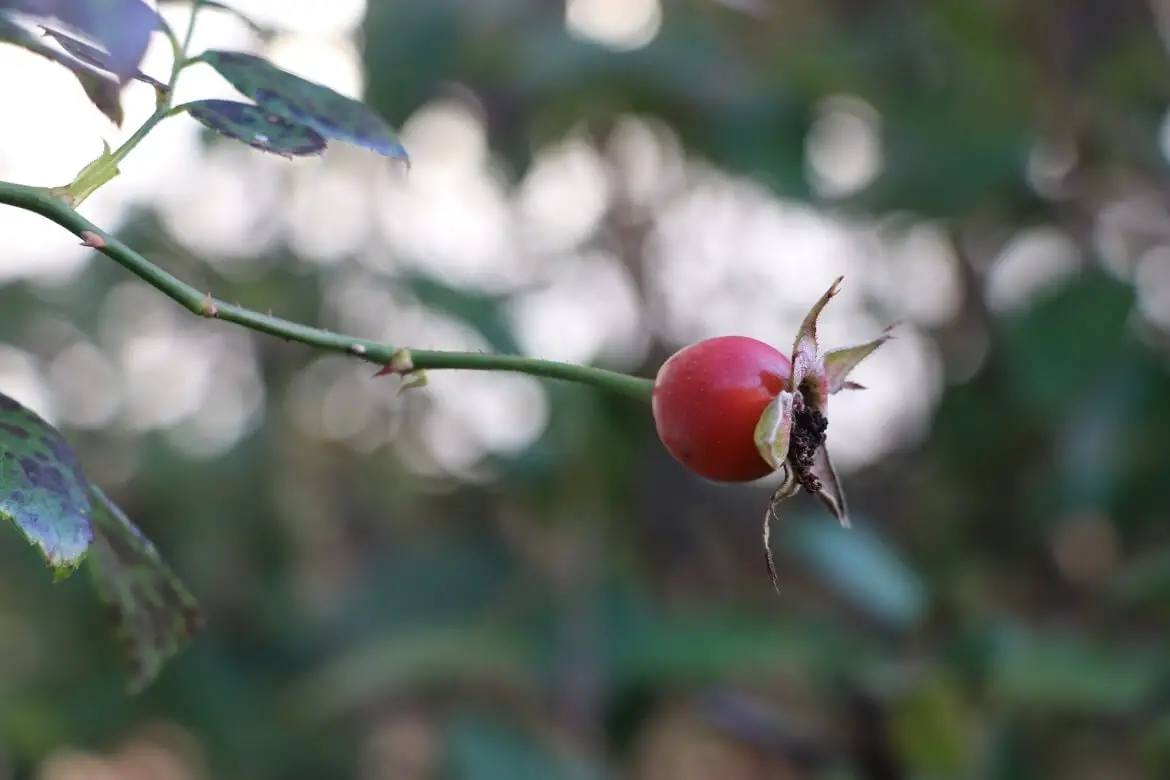
2 comments
I have always wondered what to do with those beautiful fall fruits!
Fascinating Post! I didn’t know anything about rose hips. I am going to try to harvest and use them. Thanks for all the wonderful information!